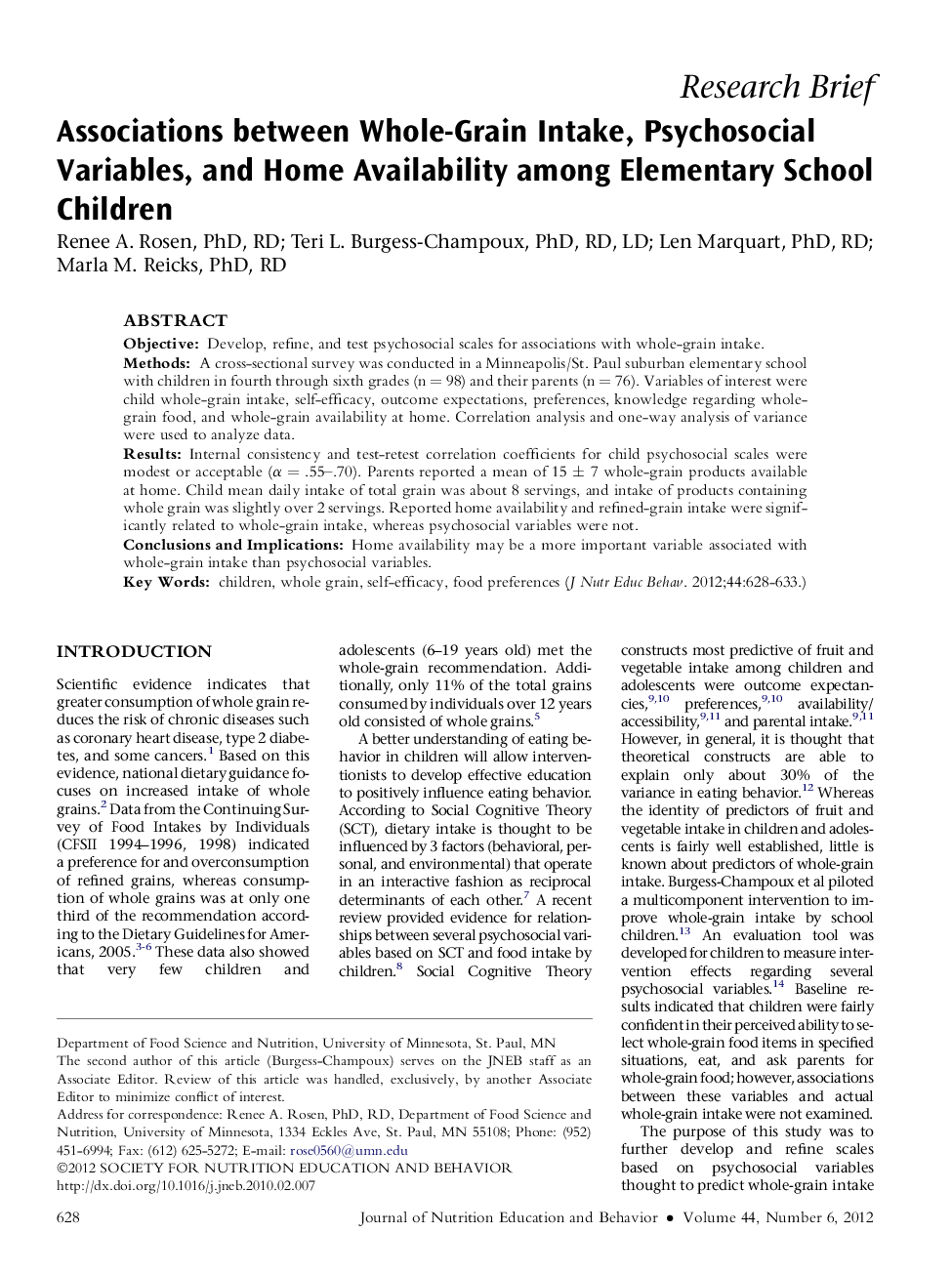| Article ID | Journal | Published Year | Pages | File Type |
|---|---|---|---|---|
| 362195 | Journal of Nutrition Education and Behavior | 2012 | 6 Pages |
ObjectiveDevelop, refine, and test psychosocial scales for associations with whole-grain intake.MethodsA cross-sectional survey was conducted in a Minneapolis/St. Paul suburban elementary school with children in fourth through sixth grades (n = 98) and their parents (n = 76). Variables of interest were child whole-grain intake, self-efficacy, outcome expectations, preferences, knowledge regarding whole-grain food, and whole-grain availability at home. Correlation analysis and one-way analysis of variance were used to analyze data.ResultsInternal consistency and test-retest correlation coefficients for child psychosocial scales were modest or acceptable (α = .55–.70). Parents reported a mean of 15 ± 7 whole-grain products available at home. Child mean daily intake of total grain was about 8 servings, and intake of products containing whole grain was slightly over 2 servings. Reported home availability and refined-grain intake were significantly related to whole-grain intake, whereas psychosocial variables were not.Conclusions and ImplicationsHome availability may be a more important variable associated with whole-grain intake than psychosocial variables.
